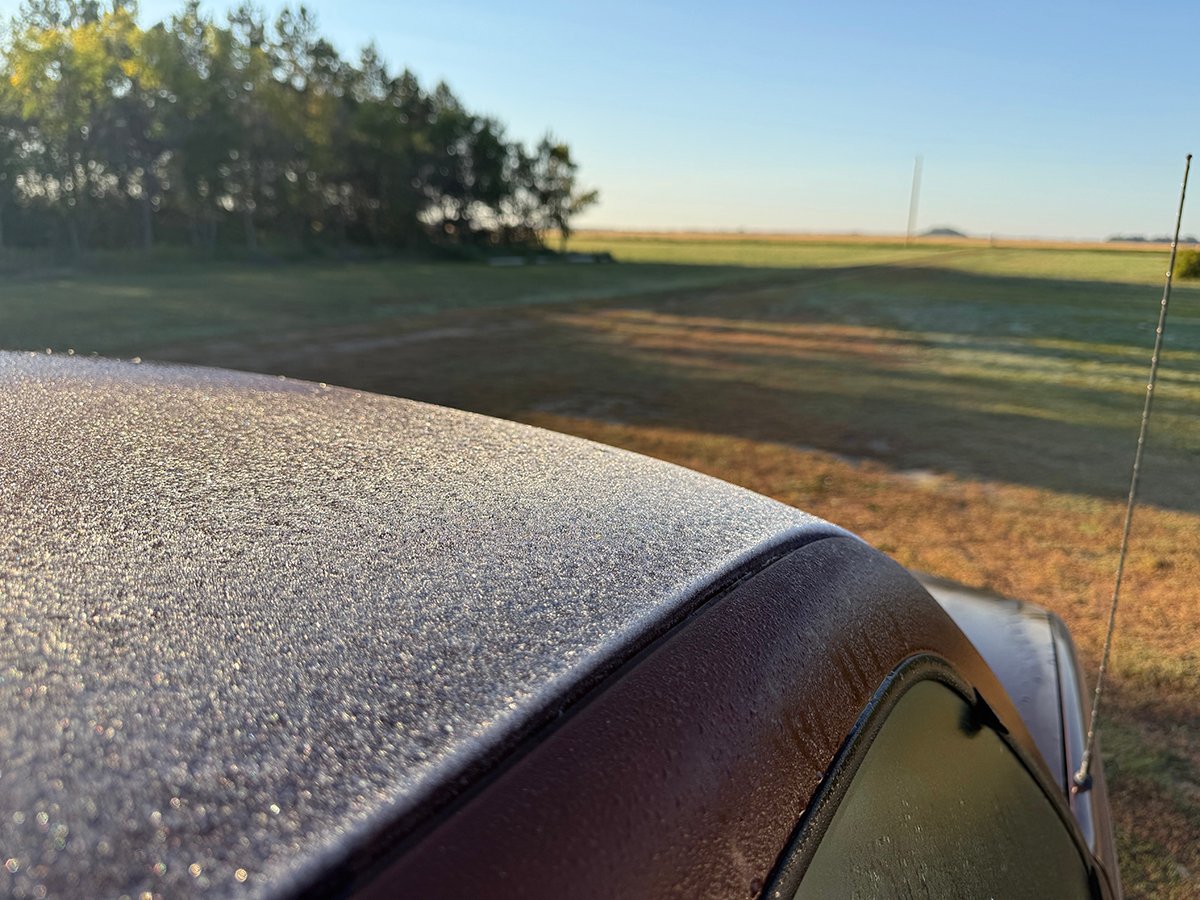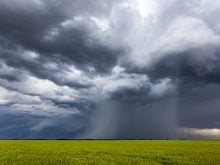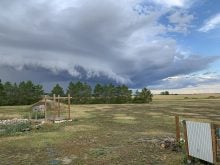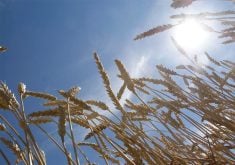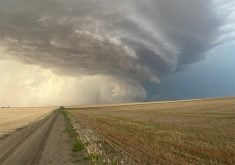In this article, we are going to take a look back at this year’s frost-free season.
For those of you who are new to reading my articles, or maybe did not know, my climate thesis when I was in university was called “Changes in the length of the frost-free season across southern Manitoba.” Phew, that is quite the title.
That was way back in the 1980s. I know I’m getting old, but I still have an interest in this topic.
Read Also
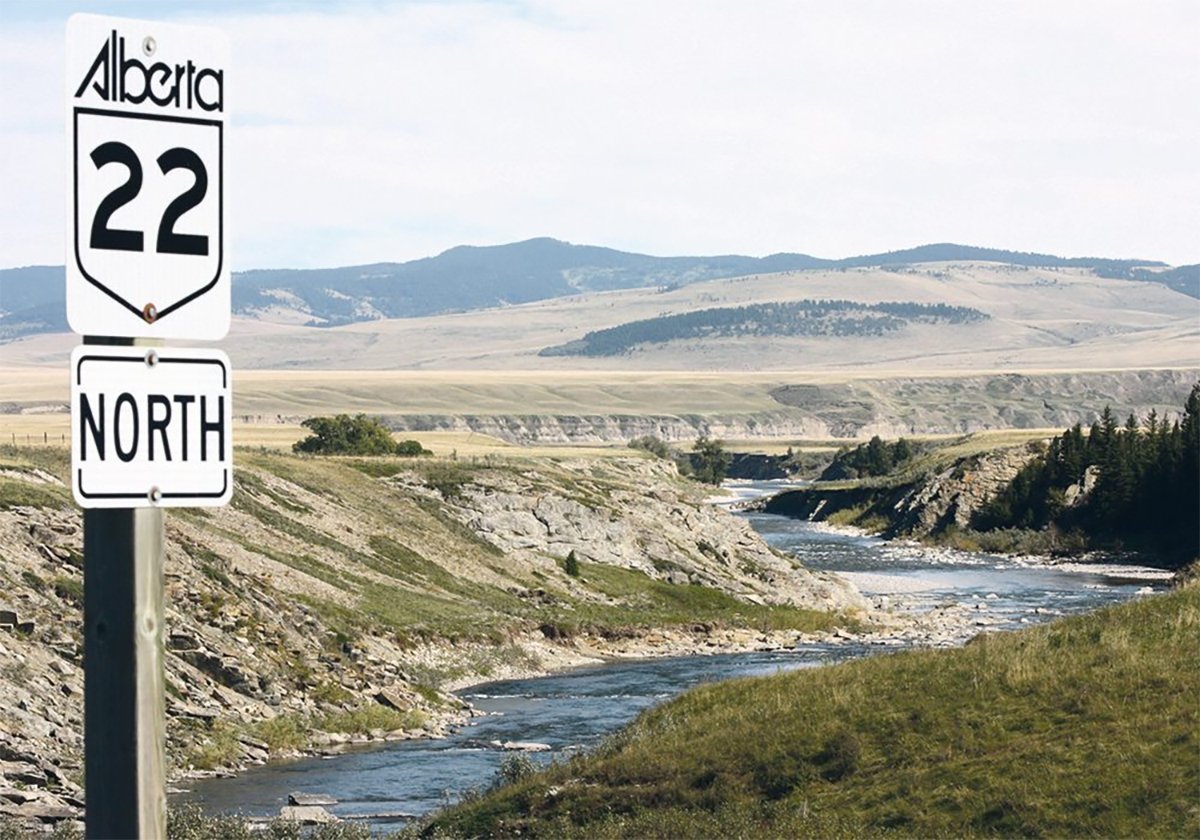
New coal mine proposal met with old concerns
A smaller version of the previously rejected Grassy Mountain coal mine project in Crowsnest Pass is back on the table, and the Livingstone Landowners Group continues to voice concerns about the environmental risks.
Let’s start our look with the last spring frosts.
Calgary, Regina, Winnipeg and Brandon all recorded their last spring frosts on either May 6 or May 7. This was about two weeks earlier than average.
Peace River, Alta., Edmonton and Saskatoon saw their last spring frost around the middle of May, which is about a week earlier than average.
Dauphin, Man., recorded its last spring frost on May 24, making it the only location coming in later than average.
Jumping to the first fall frost, we find that it was bit more of a mixed bag.
Peace River, Regina and Brandon recorded their first fall frosts from Sept. 5-7. These were all earlier than average by a week to 10 days.
Edmonton and Saskatoon were the next to see frost with both locations recording their first fall frosts on Sept. 25. This was 10 to 15 days later than average.
For Calgary, Dauphin and Winnipeg, it took until the end of the first week of October to see the first fall frost. This is about two weeks later than average.
Putting these two frost dates together gives us the length of the frost-free season.
Because most locations saw an earlier than average last spring frost and a later than average first fall frost, it makes sense that the length of the frost-free season right across the Prairies was longer than average.
Winnipeg and Calgary had the longest frost-free season at 153 and 152 days, respectively. This was nearly one month longer than the long-term average.
Peace River, Regina and Brandon had the shortest frost-free season at 117, 123 and 123 days, respectively, which was still a few days longer than average.
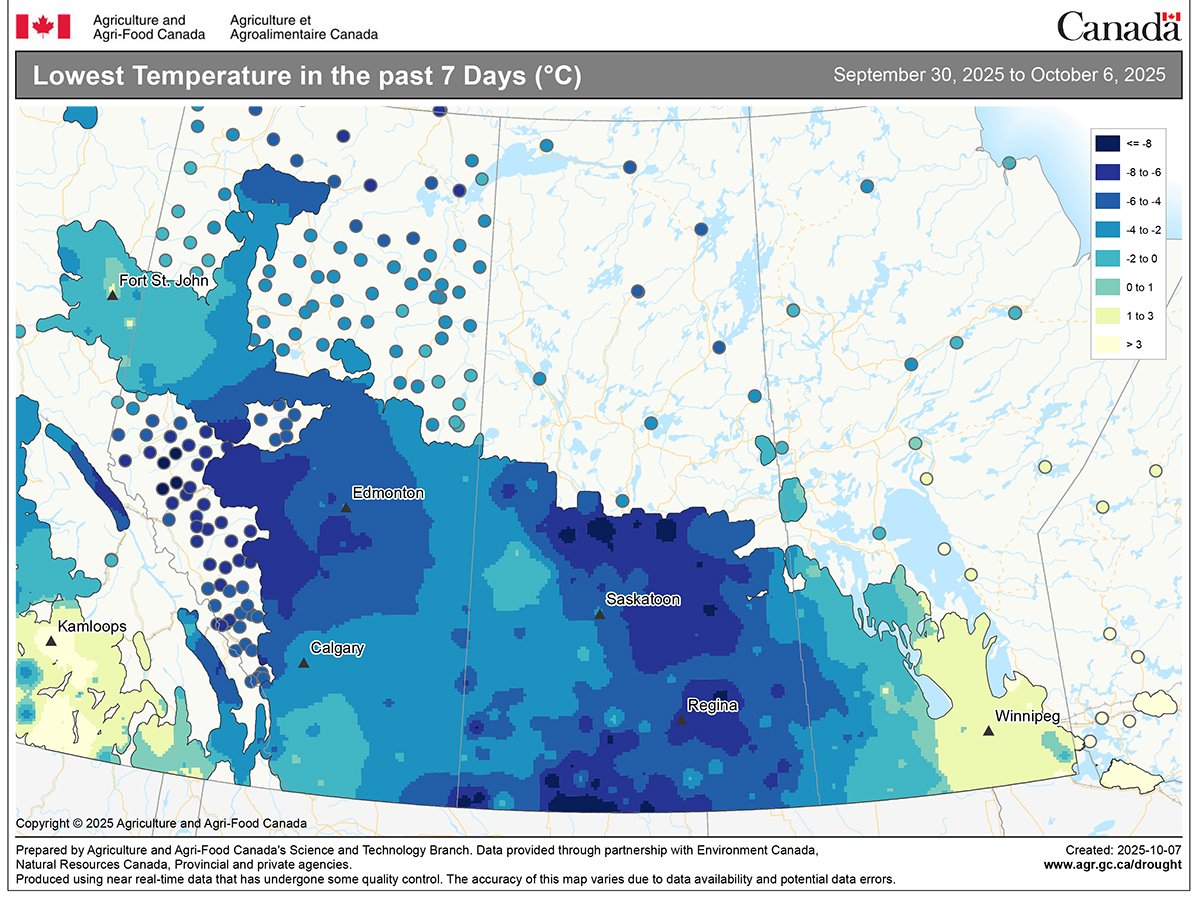
It could be argued that Peace River actually had a 140-day frost-free season because it recorded its first fall frost on Sept. 5, but that frost was only -0.1 C. If we ignored that date, then its first fall frost did not occur until Sept. 28.
Saskatoon, Edmonton, and Dauphin saw their frost-free season range from 131 to 135 days, which is about 15 to 20 days longer than average.
I should note that for Edmonton, I used the airport station for the data because that is the location with the longest record. Environment Canada’s website is using the Blatchford site which, I find, is usually reporting temperatures several degrees warmer than the airport site.
That’s about all the room I have for this issue. In the next issue we will look at the full winter weather outlook and examine what some of the lead indicators are hinting at, such as earlier season snow cover in Siberia and above average ocean temperatures in the northern Pacific Ocean.




